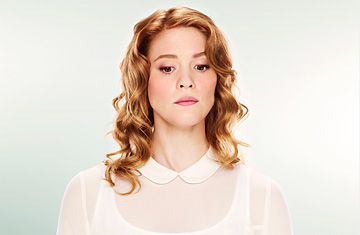
(2 of 6)
That comes at a high price. According to a 2007 study in the New England Journal of Medicine, 40% of all deaths are attributable to what behavioral researchers call poor self-regulation--the kind that causes 45 million American adults to continue to smoke, 67% to qualify as overweight or obese and nearly 600,000 to die of cardiovascular disease each year.
But if willpower is elusive, it's also "trainable and cultivatable," according to Roy Baumeister, a psychologist at Florida State University and one of the leaders in the new field. Baumeister and journalist John Tierney have written a book, Willpower. Yet another, The Power of Habit (see box), by journalist Charles Duhigg, will add to the growing canon. The challenge could not be clearer. "The simple truth is that the brain evolved from the back to the front," says Baumeister. "The back is the wanting part, the front is the restraint part, and they're both with us all the time." The goal of this rising band of willpower researchers is to make peace between back and front.
It's All in Your Head
The I-want foot stomping of the lower brain may be trouble now, but it was not designed with moderation in mind. Human beings emerged in a world in which resources were highly limited and there was no percentage in reflecting too much on whether and when we availed ourselves of them. "It's a very adaptive system," says social neuroscientist Todd Heatherton of Dartmouth University. "You see an attractive food, you eat it. You see an attractive partner, you act on that too."
We don't even need real food or a real partner for those seize-the-moment impulses to be activated. Heatherton likes to describe experiments in which undergraduate males--a group motivated to mate if ever there was one--answer an onscreen questionnaire about how they might behave in situations that offered the possibility of reckless or dubious sex. Not surprisingly, the subjects generally rate themselves highly, predicting they'd behave honorably at all times. One way to make the scores plummet? Leave a picture of a scantily clad woman somewhere within the subjects' line of sight during the test. "You sensitize the reward system, so the impulse center of the brain goes up and the control center goes down," says Heatherton.
That teeter-totter relationship plays out constantly, and while studying the phenomenon used to depend on subjective reports, it's now possible to watch the process in real time, thanks to functional magnetic resonance imaging (fMRI). Very broadly, when the midbrain--particularly the nucleus accumbens--lights up, it indicates a desire on the rise; activity in the dorsolateral prefrontal cortex, situated at the top forward portion of the brain, indicates an effort to control that impulse. Ideally, the dorsolateral wins, but a lot of things can prevent that. Alcohol and drugs, for example, not only thrill our lower brains but also compromise the prefrontal cortex's ability to contemplate consequences. That's a powerful one-two blow. But external chemistry is hardly needed to make us stray.
